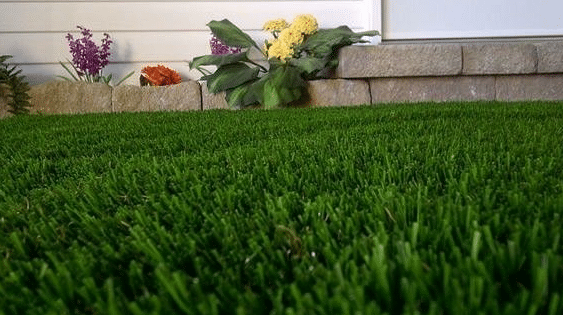Ways To Maintain Artificial Grass In Spring Season In Lemon Grove

- One of the most important steps in keeping your fake turf looking great is cleaning up any debris or dirt that has built up over time. This can be done by using a leaf blower or simply raking the surface to remove any sticks, leaves or other bits of debris.
- Artificial grass is resistant to weeds, but that doesn’t mean they won’t try to take root in your lawn. Applying weed killer once a season will help keep any pesky intruders from taking hold of your artificial turf. Make sure to use a product specifically designed for fake grass, so it does not harm the surface or cause discoloration.
- Keep the edges of your artificial grass looking neat and tidy by trimming them with a pair of scissors approximately every two months or so. This helps reduce fraying and keeps the entire look more uniform overall.
- Poor drainage can cause standing water on the surface of your lawn, which can lead to a number of problems. If you notice puddles appearing after a rainstorm, it’s important to take a look at the drainage system underneath your artificial grass and make sure everything is flowing properly.
- Just like real grass, fake turf can accumulate dirt and grime over time. To keep yours looking its best, give it a good scrub with a power washer about once a month. Make sure you’re using the right settings or else you could end up damaging the blades!
FAQ’s
What Maintenance Is Required For Artificial Turf?
The maintenance required for artificial turf varies depending on the kind of turf you have and how much foot traffic it receives. Generally speaking, it requires regular cleaning to keep the blades looking fresh and to remove any debris that has built up, as well as occasional infill checks to make sure the level is still adequate.
How Synthetic Turf Is Useful For Putting Green?
Synthetic turf, also known as artificial grass, has become a popular choice for creating putting greens in both residential and commercial settings. The use of synthetic turf for putting greens offers several advantages that make it a valuable option for golf enthusiasts and professionals alike. First and foremost, synthetic turf provides a consistent playing surface. Unlike natural grass, which can be affected by weather conditions, maintenance practices, and foot traffic, synthetic turf remains consistent in its performance. This means that golfers can expect the same roll and speed of the ball every time they play, allowing them to focus on improving their skills without being hindered by variations in the grass. Another key advantage of synthetic turf for putting greens is its low maintenance requirements. Natural grass requires regular mowing, watering, fertilizing, and pest control, all of which can be time-consuming and costly. In contrast, synthetic turf requires minimal maintenance. It does not need to be mowed or watered, and it does not attract pests or require the use of chemicals. This makes it an excellent choice for those who want to enjoy a putting green without the hassle of extensive upkeep. Synthetic turf is also highly durable and long-lasting. It is designed to withstand heavy foot traffic and the constant use of golf clubs without wearing down or developing uneven patches. This durability ensures that the putting green maintains its quality and performance over an extended period. Additionally, synthetic turf is resistant to fading from sunlight exposure, ensuring that the green remains vibrant and visually appealing for years to come. Furthermore, synthetic turf provides excellent drainage capabilities. It is constructed with a porous backing that allows water to drain through efficiently, preventing the formation of puddles and keeping the surface dry. This feature ensures that golfers can enjoy the putting green even after rain showers, as the turf quickly dries, allowing for uninterrupted play.
How Often Should I Clean My Artificial Turf?
It’s best practice to give your artificial turf a good scrub every month or so with a power washer set at the right settings to avoid damaging the blades. Additionally, removing any sticks or leaves from the surface regularly is also a good idea to keep it looking tidy.
Can I Mow Artificial Grass?
No, you should not mow artificial grass. The blades are not designed to be cut and can be damaged if you try. Instead, use a pair of scissors or trimmers to trim the edges every couple of months for a neat and tidy look.
Conclusion
It is important to properly maintain your artificial turf in order to keep it looking its best over time. Regular cleaning, infill checks and the occasional application of weed killer are all recommended steps in keeping your lawn looking great during the spring season. For more information regarding putting green, dog putting, lawn services or lawn care contact Artificial Grass Lemon Grove at (619) 754-9700.

